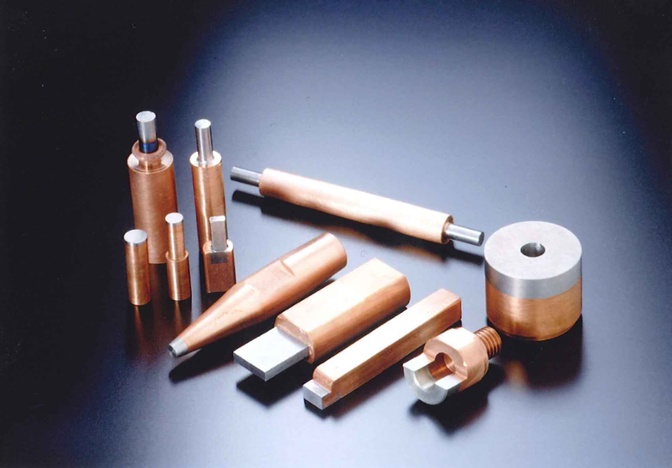We received a number of questions about two main topics in our posts about resistance welding electrodes:
- Dissimilar metals with regard to high conductivity electrodes and low conductivity work pieces and vice versa
- Friction stir in the construction of an electrode in a holder
Welding Dissimilar Metals
First, there are some great new methods being explored to weld dissimilar metals. But our expertise is in the “vice versa” above – when using low conductivity electrodes to weld high conductivity work pieces. This is not actually related to welding dissimilar metals.
But if you do need to weld dissimilar metals such as steel to aluminum, we’d suggest you consider either magnetic pulse welding or cold metal transfer. The latter is similar in theory to arc welding but it benefits (as do so many techniques) from significant advances in solid state controls. Essentially a “hot-cold, hot-cold” rapid cycling process, once the arc is detected the weld wire is retracted, the current drops, a droplet is formed and the cycle repeats up to 90 times per second.
We recommend you visit the people at Fronius who make these low heat, low current cold metal transfer systems that have additional advantages such as reportedly eliminating spatter. At the other end of the electronic spectrum, magnetic pulse welding uses an enormous but transient magnetic pulse reportedly at greater than 1 million amps for 100 milliseconds. This ultra-high speed cold process joins large dissimilar parts better than achievable by conventional metal inert gas welding and with far less energy required to achieve superior results.
Companies employing magnetic pulse welding report being able to joining not just dissimilar metals but also metals to certain non-metallics such as composites, rubber and polymers. We, of course, make no such claims for our low conductive refractory metal electrodes!
Friction Stir Techniques
Our technical paper about our non-defective bonding method has elicited a few questions about whether we use friction stir techniques to achieve our results. The answer is no, our production method is firmly rooted in sintering and reduction methods, although we do know how to join electrode materials via friction stir welding and some of our larger electrode assemblies are made using that method.
For those of you unfamiliar with friction stir welding, it uses a rotating tool that presses against the two metals to be joined and via the heat from the friction, the metals achieve a plasticized state. As the name implies, stirring occurs which combines the metals and results in a mechanical bond. However, it is only a mechanical bond because there is no melting with friction welding.
The advantage of friction welding over conventional arc welding is the elimination of the many challenges in being an expert arc welder, such as managing the arc gap, the voltages and amperages, various feed speeds, and the various gases. Since we do friction welding to produce electrodes themselves, the main disadvantage — that this is not a technique well suited for joining large structures on an assembly line — does not affect us.
However, if you are faced with the problem of in situ welding, you might want to consider looking into the advances in a new version called friction bit welding. By using an intermediary metal layer and high-speed rotating tooling, this new technique literally pushes the conventional understanding of friction welding. Brigham Young University’s Friction Stir Research Laboratory, Oak Ridge National Laboratory, and other private and public partners were among the researchers of this technique.
To learn more about the method and the advantages of non-defective Bonded resistance welding electrodes, download our technical paper, Better Together: Non Defective Bonding for Improved Resistance Welding Electrodes.






